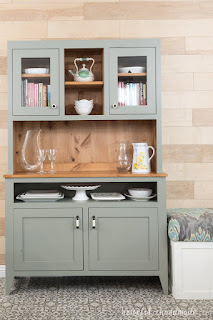Detailed Plans for Constructing a Decorative Wishing Well
This document provides comprehensive instructions for crafting a decorative wishing well, suitable for garden or patio placement. The design prioritizes aesthetic appeal while maintaining practicality and structural integrity. The plans assume a moderate level of woodworking skill and access to standard woodworking tools. Detailed dimensions are provided, but adjustments can be made to suit individual preferences and available materials.
I. Materials and Tools
Before commencing construction, ensure you have gathered all necessary materials and tools. A complete inventory will streamline the process and minimize interruptions.
A. Lumber Selection and Quantities:
The choice of wood significantly impacts the aesthetic and longevity of the wishing well. Cedar or redwood are excellent choices due to their natural resistance to rot and decay. Pressure-treated lumber offers a more budget-friendly alternative but requires proper sealing to prevent premature weathering.
- Posts (4): 4" x 4" x 8' (adjust height as needed)
- Sides (4): 1" x 6" x 8' (length determined by desired well diameter)
- Roof Supports (4): 2" x 4" x 6' (length will depend on roof overhang)
- Roof Planks: 1" x 6" or 1" x 8" (quantity based on roof design)
- Base Boards: 1" x 6" or 1" x 8" (quantity based on base design)
- Bucket Support (optional): 1" x 4" or 2" x 4"
- Trim Boards (various): For decorative accents and finishing
B. Hardware and Fasteners:
- Exterior-grade wood screws: Various lengths (1 ½", 2", 2 ½", 3")
- Wood glue:
- Exterior-grade wood stain or paint:
- Metal roofing or shingles (optional): For added weather protection
- Metal bucket or container (optional): To serve as the wishing well receptacle
- Decorative hardware (optional): Hinges, latches, and other embellishments
C. Required Tools:
- Measuring tape and pencil:
- Circular saw or hand saw:
- Drill with assorted drill bits:
- Screwdriver (impact driver recommended):
- Level:
- Safety glasses and hearing protection:
- Clamps:
- Sandpaper (various grits):
- Paintbrushes or rollers:
II. Construction Process
The construction process is divided into distinct stages to ensure efficient and accurate assembly.
A. Base Construction:
The base provides stability and enhances the overall aesthetic. Consider constructing a square or octagonal base depending on your design preference. Cut the base boards to the desired length and assemble them using wood glue and screws, ensuring squareness and stability.
B. Post Assembly and Erection:
The posts form the vertical structure of the well. Cut the posts to the desired height, ensuring they are perfectly plumb. Attach the posts securely to the base using screws and wood glue. Consider using metal brackets for added reinforcement.
C. Side Panel Construction and Attachment:
Cut the side panels to the appropriate length, ensuring they are precisely measured to fit snugly between the posts. Use wood glue and screws to attach the panels to the posts, creating a well-defined cylindrical or polygonal shape. Ensure proper alignment and even spacing throughout the construction process.
D. Roof Frame Construction:
Construct the roof frame using the 2" x 4" lumber. Cut and assemble the support beams according to your design, allowing for a suitable overhang. Ensure the roof frame is square and level before proceeding to the next stage.
E. Roofing Installation:
Apply the chosen roofing material (wood planks, metal roofing, or shingles) to the roof frame. Secure the roofing material with appropriate fasteners, ensuring watertight sealing. Consider using flashing to prevent water leakage around the edges.
F. Bucket Support (Optional):
If incorporating a metal bucket as a wishing well receptacle, construct a simple support structure within the well to hold the bucket securely. Ensure the bucket is easily accessible for clearing.
G. Finishing and Decoration:
Once the structural assembly is complete, sand all surfaces smooth. Apply the chosen stain or paint, allowing for adequate drying time between coats. Add decorative trim boards, hinges, latches, or other embellishments as desired. Consider adding a small opening near the top for retrieving wishes.
III. Safety Precautions
Safety should be a paramount concern throughout the woodworking process. Always wear appropriate safety gear, including safety glasses and hearing protection. Use caution when operating power tools, following manufacturer's instructions carefully. Ensure the work area is well-lit and free from obstructions. Proper handling of wood and fasteners is crucial to prevent injuries.
IV. Customization and Variations
This design can be customized to suit various preferences and aesthetic goals. The size, shape, and materials can be adjusted as needed. Consider adding decorative elements such as carvings, inlays, or paint schemes to enhance the visual appeal. The roof style can also be modified to create a more rustic or formal appearance. Experimentation and creativity are encouraged.
V. Conclusion
Constructing a decorative wishing well is a rewarding woodworking project that combines craftsmanship with aesthetic expression. By carefully following these detailed plans and adhering to safety precautions, you can create a beautiful and functional addition to your outdoor space. Remember that attention to detail throughout the process will result in a finished product of superior quality and lasting appeal. Enjoy the process and the satisfaction of creating something unique and lasting.














